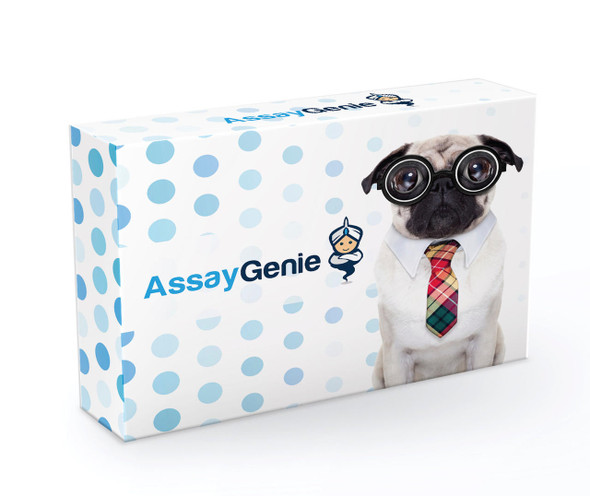Description
GPX1 Monoclonal Antibody (CAB23519)
The GPX1 Monoclonal Antibody (CAB23519) is a specialized tool for researchers studying the role of Glutathione Peroxidase 1 (GPX1) in various biological processes. GPX1 is an essential antioxidant enzyme that plays a key role in protecting cells from oxidative damage. This antibody, produced through stringent monoclonal antibody development techniques, exhibits high specificity and sensitivity towards GPX1 in human samples, making it suitable for a wide range of applications including Western blotting and immunohistochemistry.
GPX1 has been implicated in various diseases including cancer, neurodegenerative disorders, and cardiovascular diseases, highlighting its importance in maintaining cellular homeostasis and overall health. By using the GPX1 Monoclonal Antibody, researchers can gain valuable insights into the function of GPX1 in different cell types and disease conditions, paving the way for potential therapeutic strategies targeting GPX1 for clinical applications.
| Product Name: | GPX1 Monoclonal Antibody |
| Product Code: | CAB23519 |
| Reactivity: | Human, Mouse, Rat |
| Applications: | Western blotting |
| Host Species: | Rabbit |
| Purification Method: | Affinity purification |
| Isotype: | IgG |
| Clone No: | ARC53251 |
| Reactivity: | Human, Mouse, Rat |
| Tested Applications: | WB, ELISA |
| Key Applications: | Western blotting |
| Recommended Dilution: | WB 1:500-1:2000 |
| Storage Buffer: | Store at -20°C. Avoid freeze / thaw cycles.Buffer: PBS with 0.05% proclin300, 0.05% BSA, 50% glycerol, pH7.3. |
| Positive Samples: | THP-1, Mouse kidney, Rat Liver |
| Cellular Location: | Cytoplasm |
The protein encoded by this gene belongs to the glutathione peroxidase family, members of which catalyze the reduction of organic hydroperoxides and hydrogen peroxide (H2O2) by glutathione, and thereby protect cells against oxidative damage. Other studies indicate that H2O2 is also essential for growth-factor mediated signal transduction, mitochondrial function, and maintenance of thiol redox-balance; therefore, by limiting H2O2 accumulation, glutathione peroxidases are also involved in modulating these processes. Several isozymes of this gene family exist in vertebrates, which vary in cellular location and substrate specificity. This isozyme is the most abundant, is ubiquitously expressed and localized in the cytoplasm, and whose preferred substrate is hydrogen peroxide. It is also a selenoprotein, containing the rare amino acid selenocysteine (Sec) at its active site. Sec is encoded by the UGA codon, which normally signals translation termination. The 3' UTRs of selenoprotein mRNAs contain a conserved stem-loop structure, designated the Sec insertion sequence (SECIS) element, that is necessary for the recognition of UGA as a Sec codon, rather than as a stop signal. This gene contains an in-frame GCG trinucleotide repeat in the coding region, and three alleles with 4, 5 or 6 repeats have been found in the human population. The allele with 4 GCG repeats has been significantly associated with breast cancer risk in premenopausal women. Alternatively spliced transcript variants have been found for this gene. Pseudogenes of this locus have been identified on chromosomes X and 21.
| Immunogen: | Recombinant protein of human GPX1. |
| Sequence: | Email for sequence |
| Synonyms: | GPXD, GSHPX1 |
| Calculated MW: | 22kDa |
| Observed MW: | Refer to figures |





